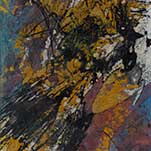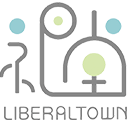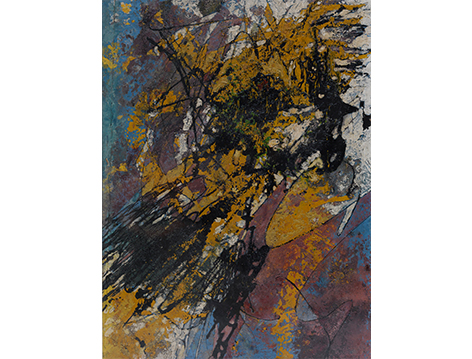



Ernst Otto Köpke
恩斯特·奥托·科普克
(1914-2009)
艺术家简介
Biography
恩斯特·奥托·科普克,1914年11月19日生于德国迪茨,2009年8月16日卒于汉堡,是一位画家、玻璃画家、彩色玻璃窗和大型马赛克的创造者。
他自1921年起前往杜塞尔多夫学习绘画,1933年到1936年在杜塞尔多夫卡普艺术学校学习;1936年至1939年在杜塞尔多夫艺术学院师从教授维尔纳·郝瑟和埃哈德·克罗克。科普克曾参与20世纪50年代现代教堂建筑的黄金时期。他一生设计的窗户众多,几乎遍布德国西部城市。1999年85岁他设计了纽伦堡附近哥特式教堂窗口,它与建筑材料物很好的结合起来,给教堂一个特殊的采光。
科普克在1950年之前的绘画作品主要是人像肖像和风景,但仅有少数被保存。自1960年以后开始创作抽象作品,而长期的玻璃、马赛克彩绘设计经验使得科普克在色彩、线条及材料的运用上独具一格。他的抽象作品,常常拥有独特的高级感,令人沉醉。
Ernst Otto Köpke was the son of the physician Ernst Köpke and his wife Elisabeth, b. Schmidt. He lived in Düsseldorf since 1921 and studied from 1933 to 1936 at the Art School Carp, and from 1936 to 1939 at the State Academy of Arts in Düsseldorfwith Professors Werner Heuser and Erhardt Klonk. His special interest was always the glass painting and in the second semester he made choirmaster designs for the Romanesque church of St. Lambert in Kalkum near Dusseldorf, which were also executed. Other areas of interest were mosaic, painting and woodcut.
His artistic career was interrupted in 1939, when he was drafted into the Wehrmacht. In 1944 Köpke became an American prisoner of war. Even during the war, he tried to keep in contact with art, in which he portrayed and decorated accommodations and canteens with pictures. So he designed the camp church, painted with Erdfarben portraits of the American camp commandant and his wife, and designed a children's book.
In 1943 he married Margret Ruhfus and in 1944 his son Peter was born. In 1946, after his release from captivity, he lived with his wife in a village near Minden, where she had moved after the destruction of the Düsseldorf house. Since the rural seclusion did not correspond to the nature of the artist, he returned to Düsseldorf in 1947 and the marriage was divorced. In Düsseldorf, Köpke married actress Paula Emilie ("Milli") Geib in 1950. From this marriage come two children, Wulf and Christiane Köpke. The couple ran an open house in which many Düsseldorf artists and actors frequented. After his separation from Milli, he lived alone in Düsseldorf, until he moved to Hamburg in 2006 to live near his son Wulf. There he died in 2009, but was buried in his hometown of Düsseldorf.
In the great period of modern church building, in the 1950s, E. O. Köpke designed windows with figurative-iconographic representations in many churches, but also in clinics and other public buildings. Later, he created mostly architectural windows and window walls, with a dynamic play of color and form. "His art realizations are ... to be understood as illustrated areas of thought whose diverse reception options are supposed to produce, among other things, a therapeutic-didactic effect, especially in their intense coloration. The mere fact that most of his work is in schools, churches and provincial hospitals seems to confirm this pedagogical claim. "(Alberg, 1985). The stained glass and mosaics do not have to be understood as museum works of art, but have a self-evident public value. Especially with the church windows, the luminosity of the colors is of special charm, also due to the variable impression with different lighting in sun or cloudy weather. Windows created by Köpke can be found in churches in Andernach, Berlin-Schlachtensee, Duisburg, Düsseldorf, Dinslaken, Essen, Erkelenz, Euskirchen, Knapsack and Efferen, Kalkum, Kleve, Cologne, Königsdorf, Mühlheim, Neuss, Rheinbach and Velbert. In 1999, at the age of 85, he created abstract windows for the gothic church in Tennenlohe near Nuremberg, which harmonize perfectly with the building fabric and give the church a special light. By planning the demolition of the Apostle Church in Düsseldorf-Gerresheim, in which an approximately 140 m² (12 m × 12 m) large window of Köpke formed the altar wall, he came in the years 2009 and 2010 repeatedly in the press. The church has now been replaced by a new building, but the window has been secured in dismantled form.
The paintings by Köpke from before 1950 are portraits and landscapes, but few are preserved. Since the 1960s he has painted large-scale, abstract pictures, "signal pictures" and pictures "with bright center". For the signal images, distinguished by a strong colourfulness, the following applies: "Without image and fable, spatial structure is transformed into color mesh ... Characters remain without their character. They are just a presence of space cuts and swatches. Their lasting relevance is their 'healing function' ... There is no juxtaposition of the elements in the pictures, nor are there any kinetic illusions or optical illusions that some well-known artists do not dispense with. "(Pfaff, 1974). The bright center images create a characterizing suggestion, drawing the viewer into the center of the picture. "Focusing entirely on the recipient's inner state of mind, this style of painting has a softened color structure that is ambiguous in its values. ... E.O. Köpke's pictures, with a bright center, unfold ... one of the many elementary relations and relationships of a great structural aesthetic of what we dare call beauty "(Alberg, 1985).
艺术家作品
ART WORKS








